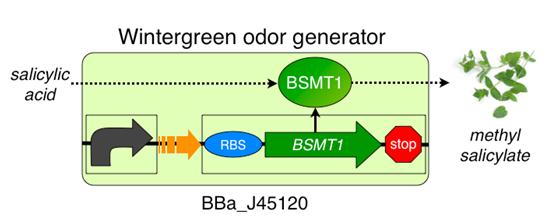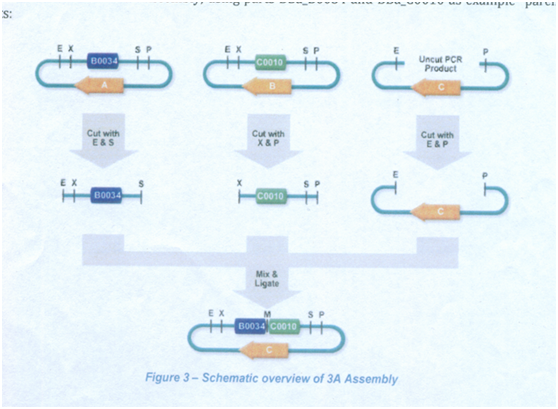Team:Beijing HDFLS High/Project
From 2013hs.igem.org
Contents |
Introduction
The basic idea of our project is to create a Synthetic measurement toolkit for the precise quantification of UV and radioactive radiation. UV radiation and radioactivity are two natural radiation types we get in contact with every day. In low doses, UV and radioactive radiation are mostly harmless to cells, besides, people can supplement vitamin D from UV radiation. Nevertheless, when exceeding a certain dose, it may bring a lot of problems, such as:
- Weaken the immune system of human
- Increase risk of skin cancer, cataracts
- Make a depth damage in gene
Recently, since artificial chemical substances such as CFC (Freon) has continued to destroy the ozone layer, followed by increased UV. Therefore,we decide to make a synthetic measurement toolkit for the quantification of UV and radioactive radiation. This toolkit Should be simple, Cheap and highly sensitive. We plan to develop a biological system in E.coli which can detect a broad range of UV-radiation doses. We choose RecA promoter as our project’s promoter and wintergreen odor biosynthetic system as reporter. When this toolkit irradiate by sun, When it has a sense that the UV rays exceed a certain numerical value. RecA promoter will be activated, leading the wintergreen odor biosynthetic system transcript and translation—people can smell a special odor. This special odor can warn people in order to reduce the harm under exceeding dose UV radiation In conclusion, our objective is to design a beautiful and practical product. The product has the doll shape, which our designed biological system is in. If the toolkit is irradiated by sun in long time, people can smell a special odor that made by wintergreen odor system.
Parts
Promoter :RecA(BBa_J22106)
e chose to start with the promoter RecA , RecA is a recombinase enzyme, i.e. a DNA strand exchange and recombination protein with protease and nuclease activity. The RecA protein binds strongly and in long clusters to ssDNA to form a nucleoprotein filament. The protein has more than one DNA binding site, and thus can hold a single strand and double strand together. This feature makes it possible to catalyze a DNA synapsis reaction between a DNA double helix and a complementary region of single stranded DNA. And ReaA is the standard gene for the SOS-response therefore it is well characterized. Other scientist have been successful when using recA for gene regulation.
SOS RESPONSE
The SOS response was discovered and named by Miroslav Radman in 1975.The SOS response is a global response to DNA damage in which the cell cycle is arrested and DNA repair and mutagenesis are induced. The SOS system is the repair system of the cell to counteract extensive DNA damages e.g. caused by UV radiation or ionizing radiation. If UV radiation impinges on the bacterial DNA it may cause cross-linking of adjacent cytosine and thymine bases resulting in pyrimidine dimers – a process called direct DNA damage. The SOS response allows bacterial cells to repair damaged DNA and continue the cell cycle. The central regulator of the SOS response is RecA. The RecA protein is activated by single-stranded DNA occurring during heavy DNA damage.
REPORTER : "Wintergreen odor enzyme (BMST1) generator" (BBa_J45119)
The wintergreen odor generator (BBa_J45120) catalyzes the conversion of the precursor salicylic acid to the odor methyl salicylate that has a wintergreen smell. The biosynthetic device is composed of two transcriptional devices: a constitutive transcription source (BBa_R0040) and an odor enzyme generator (BBa_J45119). Odor enzyme generators take as input a transcriptional signal and produce as output an enzyme that catalyzes production of an odor from a chemical precursor.
Method
Experimental theory
“3A(antibiotic)” Assembly is one way of assembling two strandard biological parts together. “3A(antibiotic)” Assembly uses the restriction sites in the prefix and suffix of the two parts to assemble them into the new composite part. The composite part will have the same prefix and suffix as the ‘parent’ parts.
This time choose RecA as promoter and wintergreen odor biosynthetic system as reporter. The uesful part of RecA are cut out by enzymese ECORI and PSTI ,and we also need ECORI and PSTI to cut the useful part of wintergreen odor biosynthetic system ,and then we need to connect them together to completely the whole system.
Step
STEP1: GROWING
(Make sure we have enough copies of BBa_J22106 and BBa_J45119.)
- PART1:
- Clean the lab bench
- Label the agar plates with names of partA and parB and partC (partA:J22106 partB:J45119 partC: BBa_J45199banana)
- Use an inoculating loop to transfer some cells from the PartA agar stab to the appropriate agar plate .Dip an inoculating loop into the stab at the same location, and streak the bacteria onto the agar plate in a zig-zag pattern
- Repeat step 3 for partB and partC
- Place the agar plates into the incubator with the agar facing down. Incubate the agar plates at 37 degrees for 14-16hours. Alternately, incubate at room temperature for 24-30 hours.
- PART2
- Clean the lab bench
- Remove the agar plates from fridge
- Add 5ml of LB broth to each culture tube(with 14ml )
- Use an inoculating loop to pick a single colony from each agar plate and sent it into the culture tube.
- Incubate for 16 hours at 37 degrees in a shaker or rotator.
- Seal until use
 "
"


